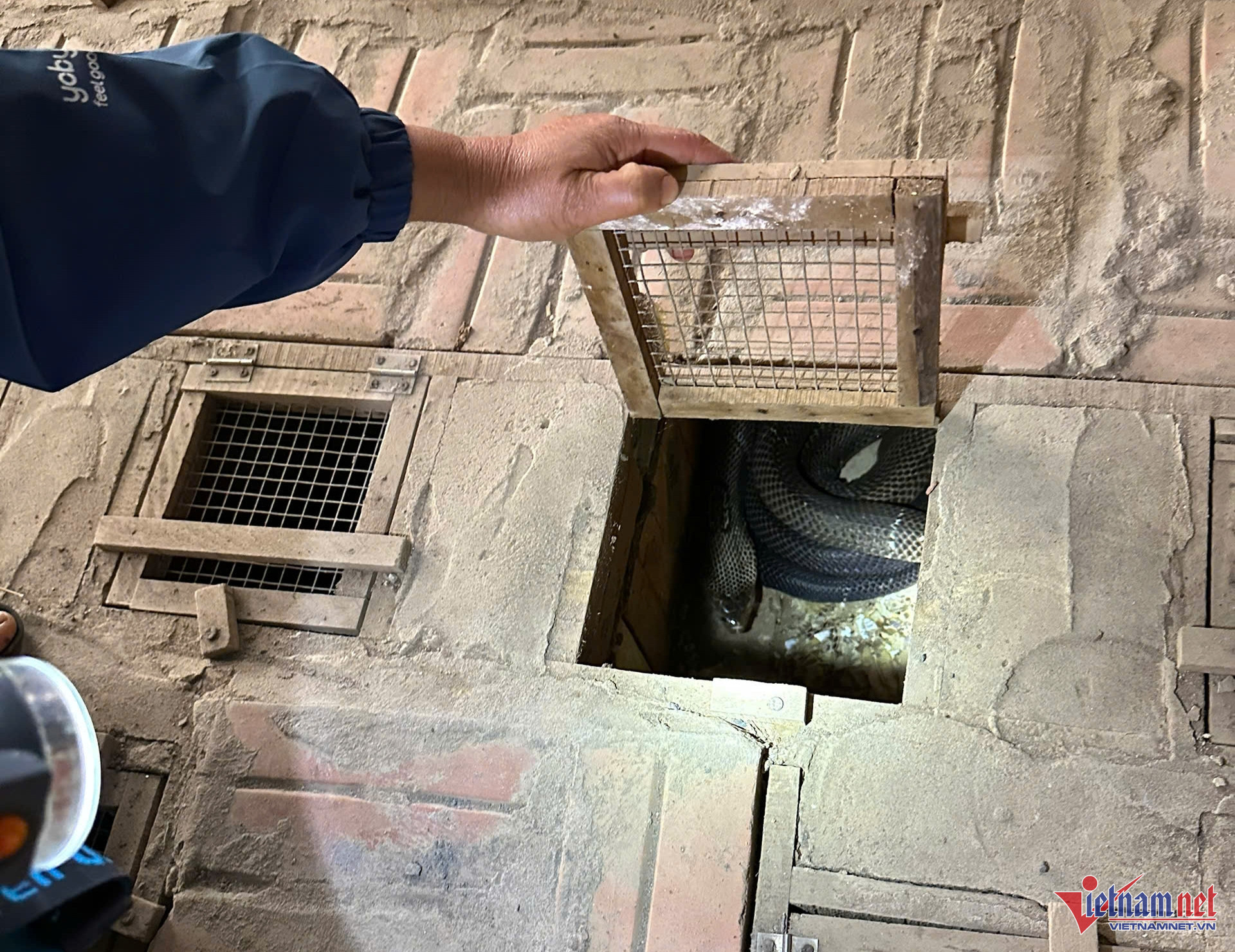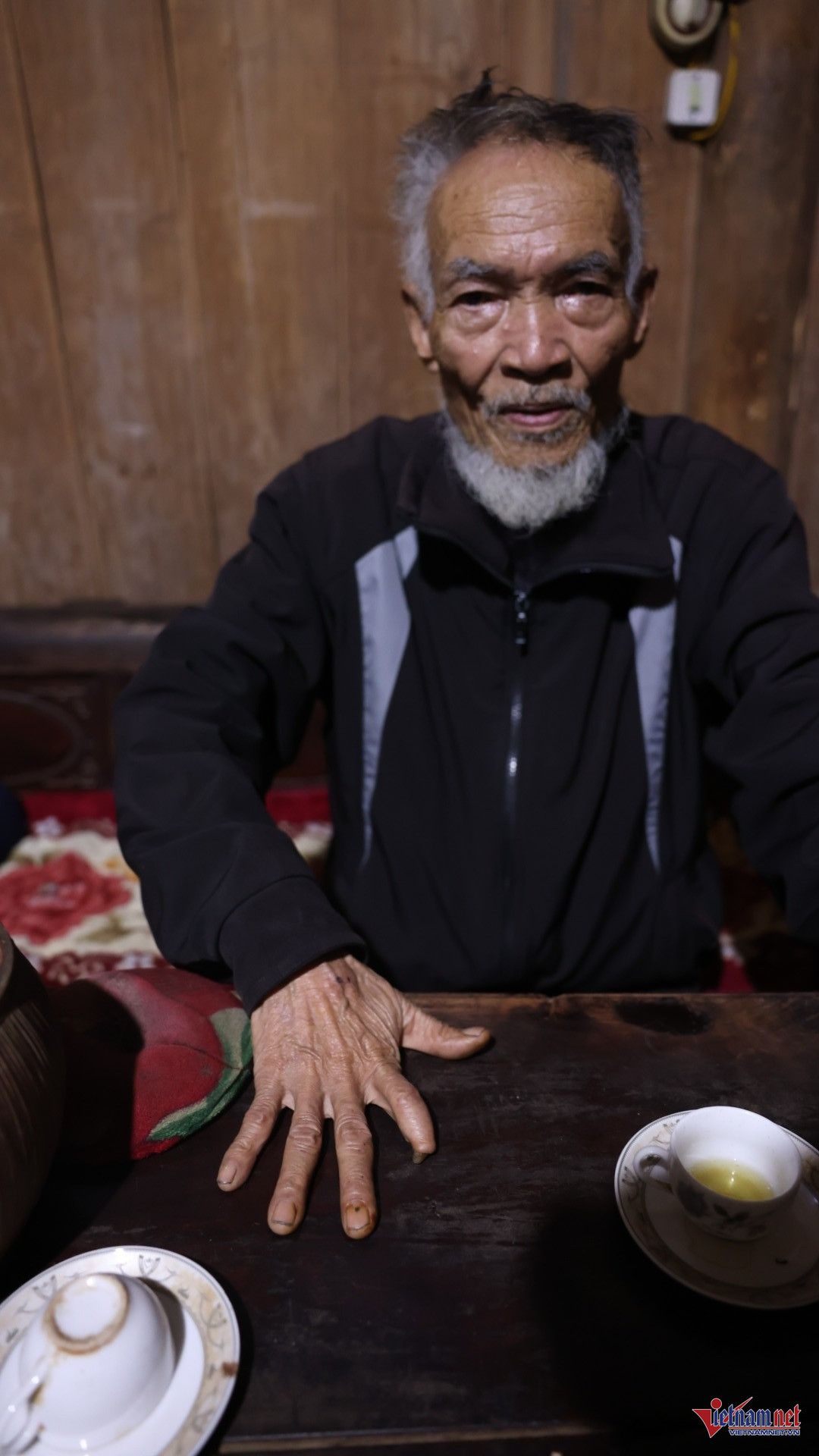
In Tu Xa commune, Le Van Su, known as "Su snake," is a well known name because he is the "master" of the king cobra breeding in the locality.
In 1993, Su, 72, traveled 60 kilometers to Pho Vang town in Thanh Son district on a bicycle to buy a pair of king cobras for breeding. When he first brought the snakes home, his family was terrified and scared of being bitten. Despite this, he ignored everyone and continued to care for his pair of snakes.
After a short time, Su’s snakes grew rapidly, reproduced well, and generated a stable income. Encouraged by his achievements, his relatives and villagers began breeding this highly venomous snake species.
Su says that cobra breeding is extremely dangerous. Just a minor mistake leading to a snake bite can be fatal. If bite victims are lucky, their finger joints may become necrotic and need amputation. If not, they may die. In the case of Su, he lost nearly one joint of finger on his right hand because of a snake bite.
Su recalled an incident in October 2000 when he caught a large snake, weighing over 2 kilograms, to sell to a customer.
"As usual, I used a stick to pin and hold the snake’s tail, and while putting its head into a sack, due to carelessness, I was bitten on the middle of the index finger of my right hand," he said.
Despite quick first aid and applying medicine at home, the finger joint gradually shrank and became necrotic because the bite was deep, and the snake's toxin was not fully expelled.
Like Su, Bui Van Lap, 51, still remembers being bitten by a snake in 2006, leading to the loss of his left index finger and atrophy of the flexor muscles of his right ring finger.
At that time, he had tried to catch a male snake for breeding, and due to a lapse, he was bitten on the finger. The pain and discomfort were intense, and even though he administered first aid, the impact of the venom was so severe that his left index finger became necrotic and had to be amputated.
"After many years of breeding snakes, the greatest fortune for me is still having my life," Lap said.
Revelations at snake village
As an apprentice to Su, Khong Van Hoan, 55, has 20 years of experience in breeding king cobras. Currently, Hoan is raising about 1,000 snakes, most of which are females for breeding purposes, with the oldest snake nearly 10 years old.
Standing in Hoan's snake breeding area, one can hear the terrifying sound of heavy breathing from the snakes in their cages. The amount of venom released from a bite of a king cobra can take down an adult within 30 minutes.

Hoan's snakes are kept in small cages enclosed by brick walls and have secure doors. The doors are only opened for feeding the snakes and capturing them for breeding purposes or selling.
The snakes once favored toads for food, but now that toads are scarce and expensive, villagers feed the snakes newly hatched chickens and ducks discarded from chicken and duck hatcheries. The snakes are fed once every three days.
Hoan said snake farming is not overly hard and the career can bring profits if the snakes stay healthy and do not die. However, he warned that snake farming is dangerous and requires extreme caution.
When snakes sense danger, they defend themselves by biting the threat with their fangs and releasing venom through holes in these fangs, he said.
In general, snake farmers only catch snakes when selling or breeding them. They must use specialized snake-catching tools and wear protective gloves. Even the slightest carelessness can be life-threatening.
According to Hoan, since the entire village is engaged in snake farming, everyone is taught traditional remedies for snake bites. The village paths also have many medicinal plants that can be used for first aid and treating snake bites.
Even though breeding king cobras is dangerous, the villagers continue to engage in the trade because it provides a high income, and they know how to prevent mishaps. The total annual revenue of the whole village from cobra raising is VND6 billion.
Duc Hoang